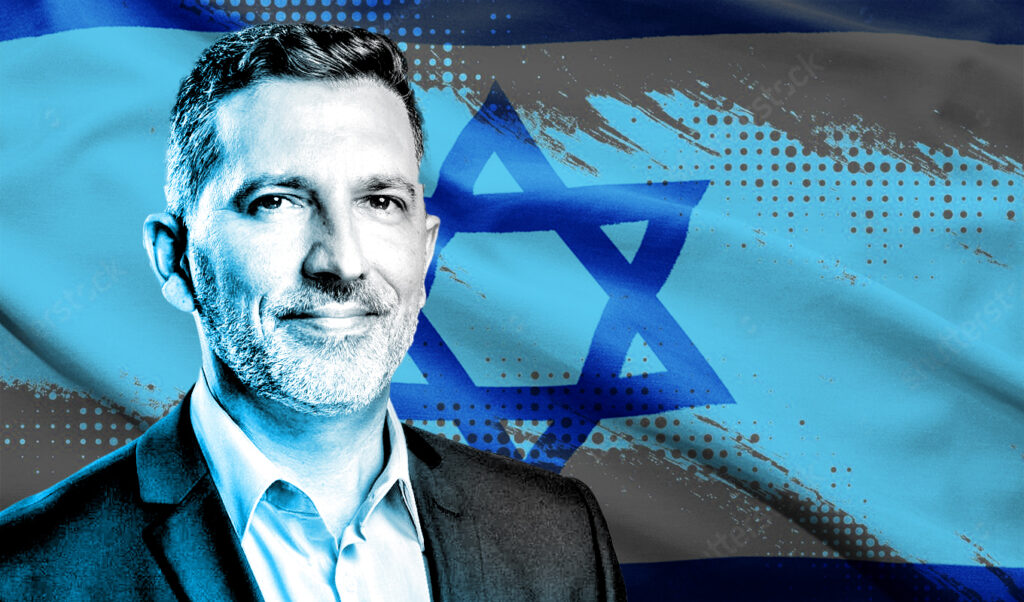The thriller that preceded the major attack of June 22, 2025, was exclusively discussed with “Parapolitika” by Dr. Oren Seter, former head of IDF Strategic Planning and former head of the hostage negotiation team. He also revealed the behind-the-scenes talks that took place and the agreements with “Hamas” that collapsed regarding the end of the war and the release of hostages, while military operations continue in Gaza City.
Full interview with Parapolitika
Based on your experience, what do you estimate should be the new approach for releasing the hostages?
I returned from retirement to the role of head of negotiation strategy, under the leadership of the Mossad director, the Shin Bet director, and the IDF strike team. The main conclusion I drew from this experience was that, on one hand, we must push very hard – both within our own country – and be flexible in order to reach an agreement, while at the same time we must apply military pressure, because when we didn’t do this or when there was a gap in operations, Hamas was intransigent.
Where do we stand right now with the hostage situation?
The situation remains complex. We woke up the morning after October 7, 2023, facing two critical issues. One was that Hamas carried out such a devastating attack on Israel and could no longer control Gaza, even for the Palestinians living in Gaza. At the same time, we had – and have – a large number of hostages there, who must be freed through negotiations and agreement. In the coming weeks, as the operation continues in Gaza City, negotiations will resume with great intensity, trying to reach a comprehensive agreement.
How can hostage release be achieved while IDF military operations are in full swing in a densely populated Palestinian area?
The only time Hamas showed flexibility in negotiations was when it was under military pressure, with danger to the lives of both hostages and Palestinian civilians. Israel tries to ensure these operations are conducted as carefully as possible, within a chaotic environment. There are still 48 hostages there and we want each one of them back. The military operation in Gaza is a controversial issue within the country, as one option is to apply greater pressure, but with much higher risk to hostages and Palestinians, and the other is to implement a more careful approach with correspondingly less pressure on Hamas, but with hostages alive, with the prospect of a future agreement. The United States should determine the appropriate timing for an agreement and pressure all sides: Israel, Hamas, and the mediators, Qatar and Egypt.
The immediate priority is to achieve a ceasefire, on reasonable terms, end the war and allow peoples to recover
What kind of pressure do you believe can feasibly be applied, either by Israel or the US?
The next 4 to 8 weeks are critical. Israel must ensure that Hamas is no longer in power in Gaza. The issue, however, of demilitarizing the Strip – whether this should happen in one week, one month, or one year – is negotiable.
Do you believe there’s a possibility for both sides to live peacefully?
I don’t think this will happen between Israel and Palestinians in the near future. The immediate priority is to achieve a ceasefire, on reasonable terms, end the war and allow peoples to recover. A lot of money came from the international community for the Palestinian education system, which educates its people to hate Israel.
The world witnessed the bombings in Iran. As a member of the IDF, you brought to light evidence of Iran’s secret nuclear program. How did you get this evidence?
In early 2018, Mossad, with a very daring operation, entered a building in Tehran and managed to extract tens of thousands of pages and thousands of files on CDs that were hidden there, and bring them back to Israel. It was like uprooting the heart of Iran’s nuclear program from Tehran and bringing it back to Israel. Iran continues to deny that Israel conducted this operation, because it continues to deny it ever had a nuclear program. I was responsible for a large team of analysts to analyze all these documents. We now had in our hands all the instructions for building a nuclear weapon and all the facilities Iran had – everything it did since the early 2000s. We had complete proof that Iran had a full nuclear weapons program in the past. All facilities were hit. Many of the program’s top scientists were neutralized. We then shared this information with other intelligence services: with Americans, Europeans, even with Russians and Chinese.
The International Atomic Energy Agency (IAEA) investigation concluded in June that Iran is not meeting its obligations under the Nuclear Non-Proliferation Treaty (NPT). In 2023, the assessment was that Iran could return to an agreement that would permanently prevent it from developing nuclear weapons, however, as time passed, there was no such agreement. In 2025, President Trump tried again to achieve an agreement with Iran, but the attempt failed. At this point, Israel decided to strike Iran’s nuclear program, all locations where 60% enrichment occurs, as well as all secret locations, but Iran’s nuclear program is not finished.
How successful do you believe these strikes were?
We know Iran already has 400 kilograms of enriched uranium at 60% purity. This wasn’t hit, but it’s difficult for them to access it. Now, however, it’s time for diplomacy to proceed with an agreement that will permanently prevent Iran from acquiring nuclear weapons.
Published in Parapolitika




